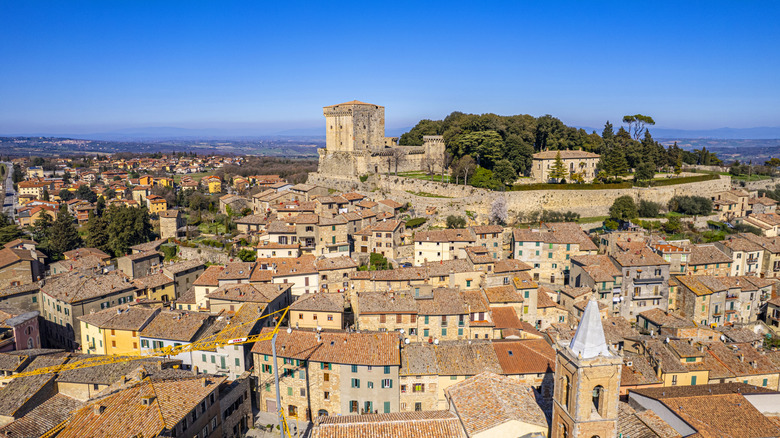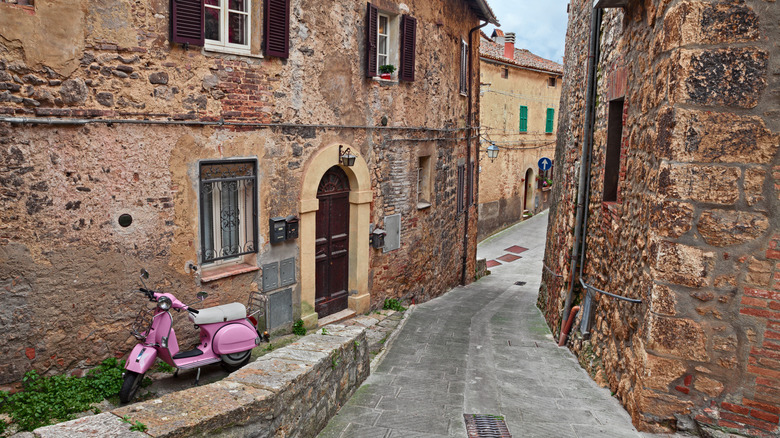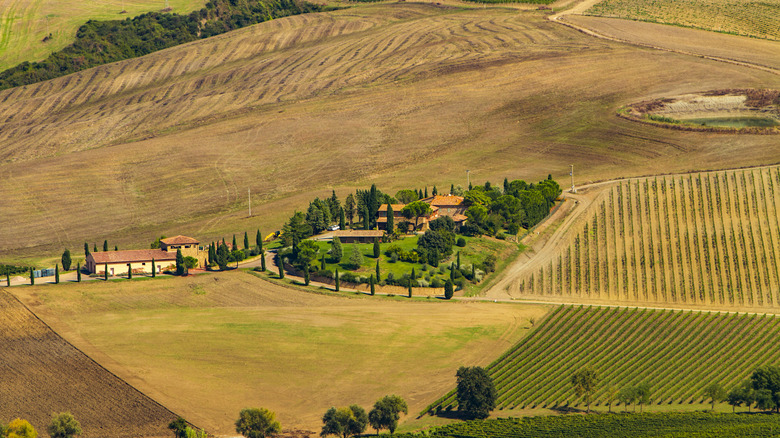This Historic Italian Hill Town Is Surrounded By Tuscan Vineyards, Hot Springs, And Gorgeous Countryside
It should hardly come as a surprise that Italy is ranked in the top five most visited countries in Europe. This is the land of the soaring Dolomites and the sun-drenched beaches of Sicily, where dreamy ski resorts await in the Alps and castle-topped coast towns cling to the cliffs of Sardinia. At the heart of it all is the much-loved and forever-popular region of Tuscany, a place of rolling vineyards and hilltop towns you simply cannot help but fall in love with. One such hilltop town is Sarteano — and it might just be the laid-back, historic gem you've been searching for.
Located deep in the Province of Siena, near the wine mecca of Montepulciano, Sarteano cascades down a ridge topped with big stone pines. It's crowned by a muscular castle and unfolds in quintessential Tuscan style — think crooked cobbled alleyways draped with washing lines and sunny piazzas peppered with wine bars. Unlike some of its neighbors — like the touristy San Gimignano, for example — this one's rarely mentioned in lists of the top Tuscan towns. It remains off the radar and all the better for it.
Public transport connections aren't great in this rural corner of Tuscany, so it helps to have a car to visit Sarteano. The nearest airport is in Florence, some 85 miles away to the north, while Rome's Fiumicino Airport is a two-hour drive to the south. Access to your own ride will also help when it comes to exploring the surrounding countryside, where the idyllic Val d'Orcia beckons with hot springs and winelands flaunt their fine tipples.
The rich history of Sarteano
Like many of the hill towns of Tuscany, Sarteano is old. Like, really old. The town's heyday was the Etruscan era, which began around 2,700 years ago, and it's often hailed as one of the best places to begin a journey into the unique past of the Etruscan people. Start at the Archaeological Civic Museum of Sarteano, where you'll come face to face with haunting artifacts from ancient burial tombs and mystical artworks that depict figures from Etruscan folklore.
The other historical feature that simply can't be ignored is the soaring castle that commands the skyline of Sarteano town. Lording over sweeping panoramas of the surrounding Tuscan valleys, it still has original 15th century bulwarks and narrow spiral staircases that you'll need to hold your breath to navigate. The pièce de résistance, however, is the view from the top keep, which extends as far as Lake Trasimeno on a clear day.
After all that, make your way to the main square — Piazza XXIV Giugno — where you can sit with a glass of local wine and admire the terracotta-colored buildings jostling for space above the cobbles. That's the heart of a historic quarter that's all shady backstreets and winding roads; perfect for getting lost in.
Explore a region of rich wines and steaming springs
Just one glance at the map should be enough to realize that Sarteano sits in a truly enticing corner of Italy. The postcard-perfect UNESCO landscapes of the Val d'Orcia await to the west, and the olive groves and farms of the wonderfully rural Valdichiana beckon to the northeast. It's not for nothing that Rick Steves highly recommends renting a car to explore Tuscany! Drive out of town and you can hit everything from hot springs to wineries within the same day.
The 40-minute road trip to Bagni San Filippo is a montage of slender cypress trees and honey-colored farms, taking you into the heart of the Val d'Orcia. What awaits is a series of hidden hot spring with bright blue waters for ultimate relaxation, where the steaming liquid cascades over a series of mineral ledges in the forests next to town. They're completely free to enter, offering a place to soak and unwind surrounded by the Tuscan countryside.
Head in the opposite direction if the taste buds are a-calling for some of central Italy's legendary wine. Enchanting Montepulciano is only 30 minutes north. There, you'll not only get lost between grand Renaissance palaces and pretty piazzas where shops sell truffles and olive oils, but you'll also get to sample the famous Vino Nobile — an earthy and elegant wine that's aged in oak barrels.


